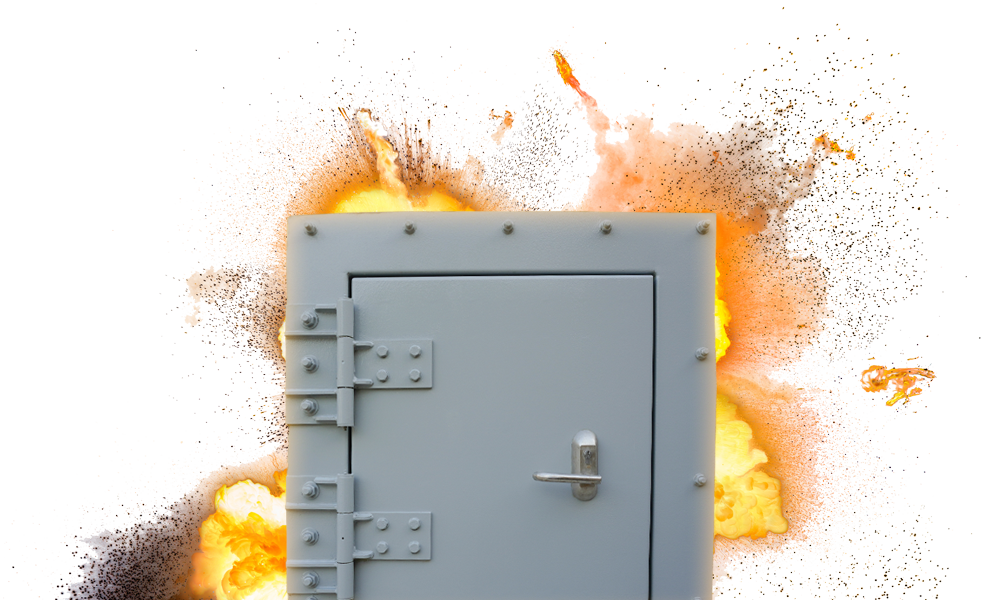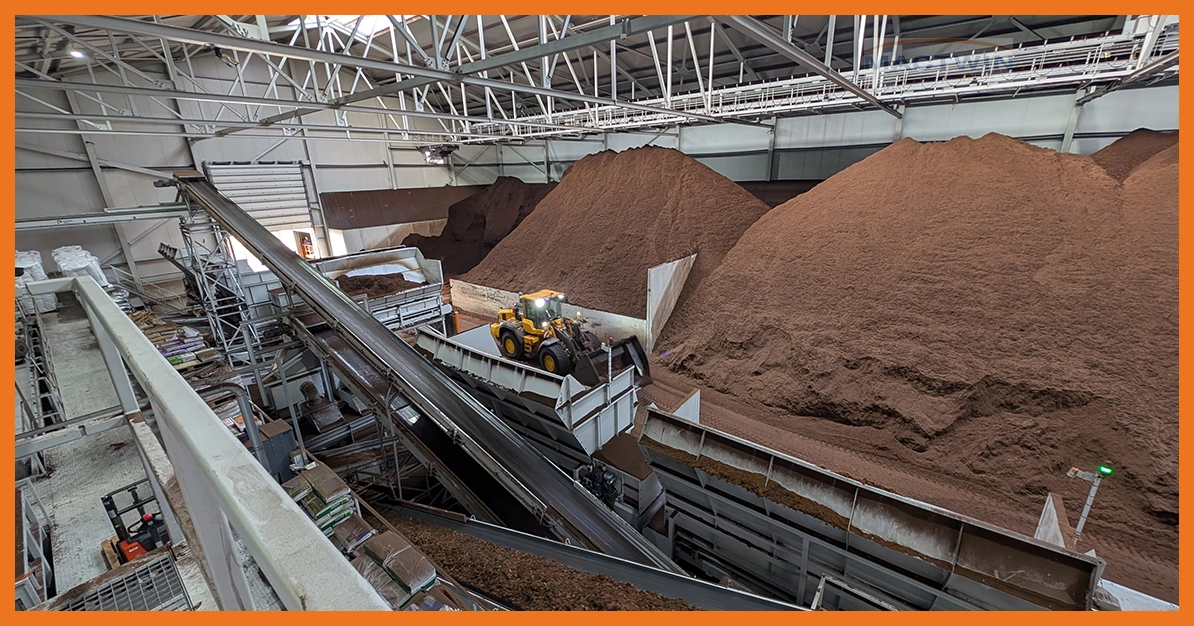A door grants or prevents access to a space. Where there is a risk of explosion, it is essential that the door does not become a vulnerable point in the overall blast resistance of your building. Explosions can be caused by external factors (criminal or terrorist attacks, industrial explosions) or from within (for example, in a boiler room). But how do you protect your building and employees against such pressure? What are the possibilities for blast-resistant walls and how does this relate to the resilience of the total envelope of a space? Must the door still function after an explosion? To what extent may a door deform? We examine your safety and security challenge comprehensively from a Risk Management perspective, while also understanding the details.
Everything about Blast-Resistant Doors
We regularly work for organizations that face an inherent risk of explosive attacks, such as banks, cash-in-transit companies, political or military institutions. In these organizations, it is important that the door demonstrably provides protection against an explosion.
Blast-resistant doors are available in many standard dimensions. If necessary, we also supply custom blast-resistant doors. Not only access doors are made blast-resistant, but there are also blast-resistant emergency doors, blast-resistant sectional doors or blast-resistant escape doors.
Depending on your situation, there are choices you must make when you need a blast-resistant door. Do you want a window? Should the door be fitted with UHSS (Ultra High Strength Steel) plating on one or both sides? Must the door still be functional (usable as an escape door) after the explosion? Should the door be fitted with standard or panic hardware and must it, for example, be integrated into an access control system? In many cases, we also make doors bulletproof, fire-resistant and burglary-resistant. With our advice, you are always demonstrably assured of the best price-performance ratio.
Weak Points in Blast-Resistant Doors
Weak points in a blast-resistant door are particularly the locks, hinges/pivot parts and seams. These are also extensively tested and included in the desired resistance class. Around the door, we examine the resistance of the frames and walls, so that all measures are balanced. For example, hinges and frames must be calculated to handle the extra weight of an armored door.

Standards for Blast-Resistant Doors
There are no standards for protection against contact and shaped charges that are placed directly on facade elements such as doors and windows, but also walls. Mactwin has gained experience with practical tests to investigate the effect and failure progression with the aim of being able to deploy the right measures.
For explosions at a distance such as car bombs and industrial explosions, standards have been established. For example, the European standards EN 13123, EN 13124 and EN 13541. Additionally, we use the American GSA-TS01:2003 and ISO standards ISO 16934 and ISO 16943 where necessary. However, a standardized product says nothing about the quality of your total protection. We ensure that all measures are built in balance and coherence with each other, so that you can always provide the resistance and safety that are important for your organization. Would you like to know how we go further where standardization ends? Please feel free to contact us!

Resistance Class of Blast-Resistant Doors
For the definition of resistance classes, several factors are important; consider the size of glazing used, distance from explosive to target (Stand-off), amount/weight of explosives, peak pressure, impulse and duration of the impulse. The degree of splintering on the safe side of glass and the extent to which, for example, a door disintegrates under pressure are also determining factors for the safety level.
Depending on your risk profile, we choose together with you the resistance class that your situation requires and that fits your ambition.




